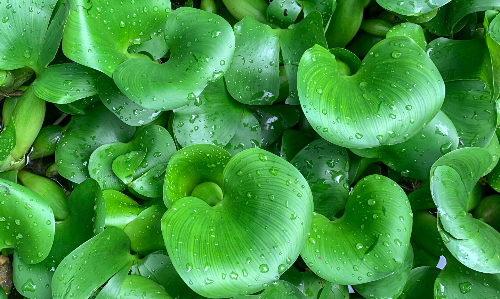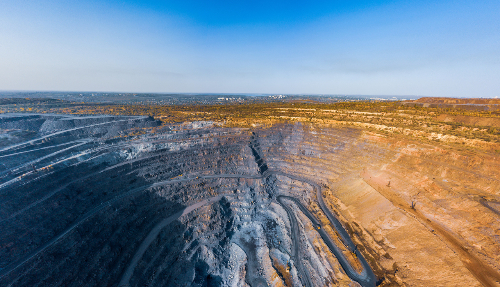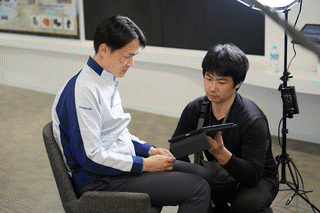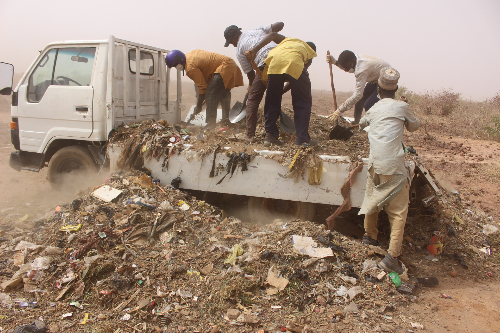JStories — In Kesennuma, a small coastal city in northeastern Japan, the sea has long sustained the residents — but it also brought devastation during the 2011 Great East Japan Earthquake and tsunami. As the community worked together to rebuild, one inspired craftsman reimagined what it means to create something lasting. Hiroshi Oikawa, founder of Oikawa Denim, began making jeans from materials once discarded by the local fishing and hunting industries — among them swordfish bills, deer hair, and plant fibers. Originally treated as waste, these materials have found new life as premium, one-of-a-kind fabrics.
“I wanted to create jeans that could one day go back to nature,” says Oikawa. “After losing so much to the sea, I began to think deeply about how we live with it — how we can make things without harming it.”
These natural “scraps” from sea and land, once destined for disposal, are now transformed by skilled processors and seamsters in Kesennuma into distinctive jeans that have won fans in Japan and overseas.
“The finished jeans feel just like 100% cotton,” Oikawa explains. “And because swordfish bills contain so much calcium phosphate, denim spun with that powder retains moisture better than conventional fabric.”
Even the fragments left over from yarn-making are carbonized and used as dye, resulting in zero waste. The blue-gray hue of the denim echoes the swordfish itself, perfectly reflecting Oikawa's philosophy: a fusion of sustainability, craftsmanship, and respect for nature’s cycles.
Life-changing encounters in a shelter
Thanks to its high-end craftsmanship, Oikawa Denim has earned a devoted following overseas, even producing reissues for world-famous brands.

Oikawa credits a prolonged stay in an evacuation shelter for completely changing his outlook on life. “I had money in my wallet, yet couldn’t buy even a single bottle of water," he recalls. "It forced me to rethink what money really is."
Shelter life also brought him into contact with people from many trades. Through conversation, he realized how much he didn’t know about the work happening right in Kesennuma.
“Much of what I heard about work at sea was new to me," he says. "Learning that the bills of our local specialty, swordfish, were simply cut off and discarded into the ocean felt wrong."
He added: “Had I not lived through that earthquake, I probably would have just nodded and moved on. Fishers risk their lives at sea to bring back these fish. Rather than throw parts away, couldn’t we honor them by putting them to use through our work?”
With that conviction, the challenge of making “swordfish denim” began.
Committed to natural materials that return to the earth
Today, nearly all raw materials for denim produced in Japan are imported. Oikawa saw a chance to change that.
“If what was being discarded can become clothing material, we can make better use of resources and also support fishers by purchasing the material,” he says.

Miyagi Prefecture boasts Japan’s largest swordfish catch, and Kesennuma Port will continue to land high-quality fish through around March. The rapier-like bill can reach about a meter in length. Because it’s unwieldy and can damage the fish when landed, it’s usually cut off on deck and discarded. At Kesennuma alone, more than 40 tons are thrown away each year.
At Oikawa Denim, the purchased bills are pulverized and used in spinning.
“Hundreds of cotton fibers — each with a hollow, macaroni-like structure — are twisted into a single yarn. By filling those hollows with powdered bills, we can reduce the cotton content by about 30%,” he explains.

Jeans made from swordfish denim are composed entirely of natural materials that fully return to the earth. Along with the bill-infused fabric, they use coconut-shell buttons, avoiding metal rivets, metal buttons, and zippers altogether.
In production, Oikawa follows the ethic etched into him during shelter life: management that doesn’t tilt toward profit-seeking. His goal is a sustainable system where everyone — from fishers and grinders to carbonizers, spinners, dyers, and weavers — benefits, rather than ramping up mass production simply because sales are strong.
For that reason, annual purchasing is capped at about 1 to 1.5 tons of bills, and production at 1,000 to 1,500 pairs of jeans.
“This isn’t a flash-in-the-pan venture — the point is to keep it going. We set our production volume from the outset. Swordfish denim is, in a sense, a challenge aimed at creating a better cycle for the future.”

Driven to inspire young minds with the art of sustainable creation
After the success of the swordfish bill denim, Oikawa continued to innovate with his efforts to recycle materials. Since 2015, he has expanded his work to include denim made from deer hair, a material once considered a nuisance. “The hair from culled deer has no use and is dissolved with chemicals and discarded,” says Oikawa. “It’s not just about recycling waste; I hope that by using deer hair denim, it will prompt people to think, ‘Why have the deer that need to be culled increased so much?’"
“I want to share the joy of creating things with young people,” he adds, emphasizing his desire to teach the next generation about sustainable innovation.

The project has now moved from “sea” to “land,” and the remaining “mountain” phase is underway: crafting denim from materials they grow themselves.
“We’re still prototyping," Oikawa says. "But we’re cultivating grapes, turning the vines into fiber for yarn, and dyeing the denim with the juice."
For him, “there is nothing in nature that can’t be used.”
He adds: “I want a society where failure isn’t taboo and people can keep trying. To that end, we need environments where the young — who will shape the future — can learn the backstory, the process, and the joy of making things.”
Translated by Mizuki Nakagawa, Anita De Michele | JStories
Edited by Mark Goldsmith
Top photo: Photo courtesy of Oikawa Denim
For inquiries regarding this article, please contact jstories@pacificbridge.jp
***
Click here for the Japanese version of the article





![[Podcast] Japanese technology to supercharge human fertility (Part 2)](https://storage.googleapis.com/jstories-cms.appspot.com/images/1765863548035unnamed-7_bigthumbnail.jpg)
![[Podcast] Japanese technology to supercharge human fertility (Part 1)](https://storage.googleapis.com/jstories-cms.appspot.com/images/1765440905082unnamed_bigthumbnail.jpg)
_bigthumbnail.jpeg)




![[Interview: Part 1] From nourishing souls to feeding the hungry](https://storage.googleapis.com/jstories-cms.appspot.com/images/1763695595492unnamed_bigthumbnail.jpg)


![[Interview] When digital and physical worlds meet](https://storage.googleapis.com/jstories-cms.appspot.com/images/1747974430456unnamed-2_smallthumbnail.png)




_smallthumbnail.jpeg)

![[Interview: Part 1] From nourishing souls to feeding the hungry](https://storage.googleapis.com/jstories-cms.appspot.com/images/1763695595492unnamed_smallthumbnail.jpg)

